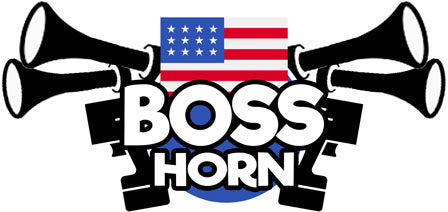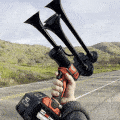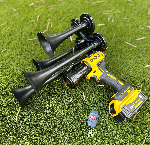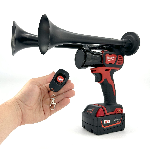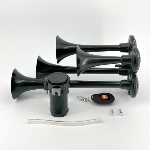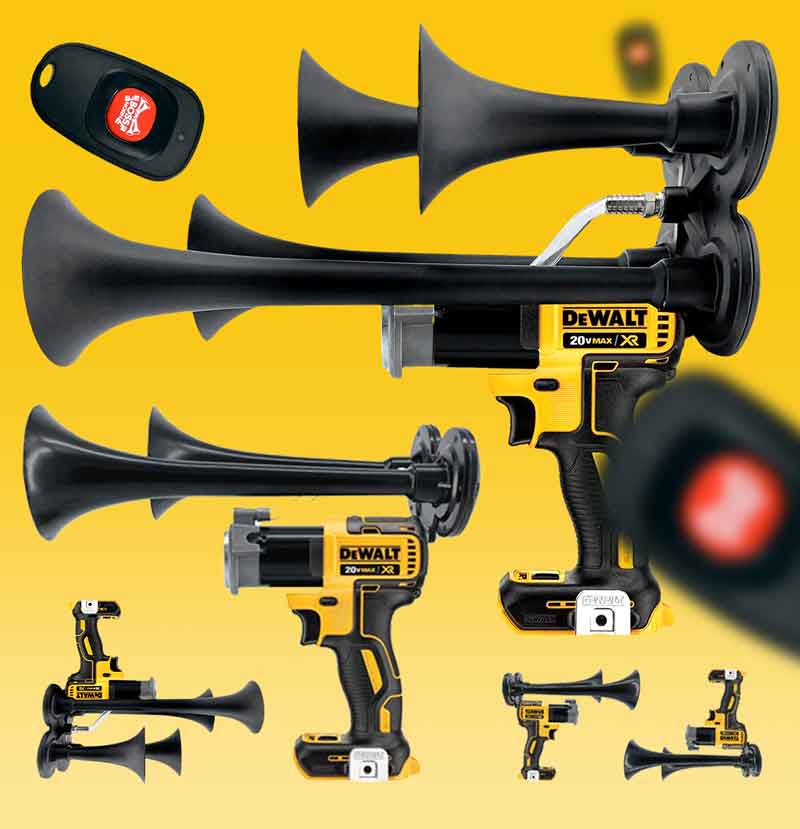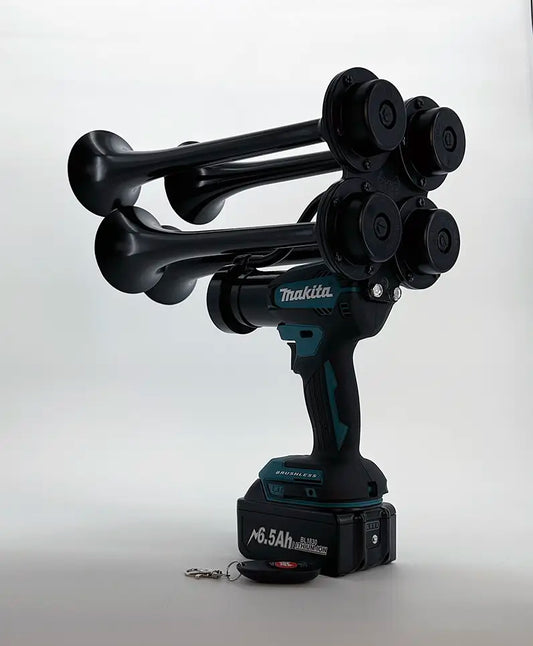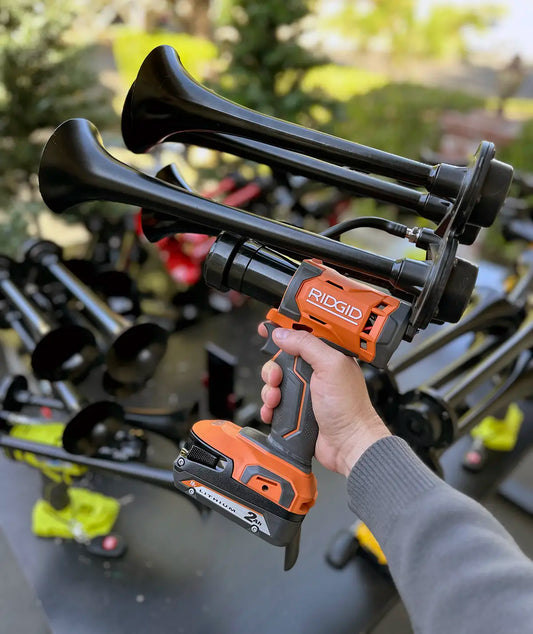Did you know that the sound level of a train horn can reach above the threshold for pain in the human ear? Train horns have been used for decades as a safety measure to warn people of an approaching train at railroad crossings. The loudness of train horns is crucial in alerting drivers and pedestrians of the potential danger.
Historically, train horns have played a significant role in preventing accidents at railway crossings. The Federal Railroad Administration (FRA) in the United States regulates the use of train horns to ensure safety for both train operators and the general public. The standard decibel level for train horns is set to an intensity that can be heard from a significant distance to warn those near the tracks.
One of the challenges faced with train horns is finding a balance between safety and noise pollution. Communities near railway crossings have raised concerns about the disruptive nature of train horns, especially during nighttime hours. Some municipalities have implemented quiet zones, where additional safety measures are put in place to eliminate the need for train horns to sound, reducing noise pollution while maintaining safety standards.
What makes a 150 decibel train horn so loud?
A train horn with a sound level of 150 decibels is considered extremely loud, surpassing the threshold for potential hearing damage. The intensity of the sound produced by the horn is crucial for ensuring that it can be heard from a great distance to alert pedestrians and vehicles of an approaching train. In this section, we will explore the factors that contribute to the loudness of a 150 decibel train horn and its importance in ensuring safety on railway tracks.
Overview of Train Horns
Train horns are a vital safety feature of locomotives, used to signal the presence of a train and warn pedestrians and drivers of their approach. These horns are designed to be extremely loud to ensure they can be heard over long distances and through various environmental conditions.
Importance of Loud Train Horns
Loud train horns are essential for ensuring safety at railroad crossings and preventing accidents. The Federal Railroad Administration (FRA) mandates that train horns must emit a minimum sound level of 96 decibels and a maximum sound level of 110 decibels. This regulation helps to alert individuals of an oncoming train and gives them time to clear the tracks.
150 Decibel Train Horn
A 150 decibel train horn is significantly louder than the minimum requirement set by the FRA. These horns are often used in areas with high levels of ambient noise or in situations where additional warning is necessary. The increased sound level helps to ensure that the horn can be heard over other noise distractions and provides an extra layer of safety.
Benefits of a 150 Decibel Train Horn
- Enhanced safety: The increased volume of a 150 decibel train horn can help to grab the attention of individuals who may otherwise not hear a traditional train horn.
- Improved warning: In busy urban areas or industrial zones, a 150 decibel train horn can cut through the noise pollution and alert pedestrians and drivers of an approaching train.
- Reduced risk of accidents: By ensuring that the train horn is loud and distinct, the chances of accidents at railroad crossings are minimized.
Statistics on Train Horn Incidents
According to the FRA, approximately 2,100 incidents involving train horns occur each year in the United States. These incidents often result from individuals failing to heed the warning of an approaching train. The use of loud train horns, such as a 150 decibel horn, can help reduce the number of these incidents and improve overall safety.
https://youtube.com/watch?v=GgQLiyZ5U0Q
1. Can train horns reach high decibel levels?
Yes, train horns are designed to produce loud sound levels in order to alert pedestrians and vehicles of an oncoming train. These horns are constructed to be powerful enough to penetrate through ambient noise and signal the presence of a train from a significant distance.
- Train horns are manufactured to emit high decibel levels for effective communication.
- The purpose of train horns is to warn individuals of an approaching train and promote safety.
- Train horns are regulated by laws to ensure they meet specific volume requirements.
2. How far can the sound of a train horn travel?
The sound of a train horn can travel a considerable distance, depending on various factors such as the terrain, weather conditions, and surrounding ambient noise levels. In optimal conditions, a train horn can be heard from several miles away, alerting individuals of the train's presence and allowing them to take necessary precautions.
- The range of a train horn's sound can vary based on environmental factors.
- Train horns are designed to be audible from a distance to enhance safety measures.
- The sound of a train horn can travel farther in open areas compared to urban environments.
3. Are train horns regulated by laws?
Yes, train horns are subject to strict regulations outlined by governmental authorities to ensure they are used responsibly and effectively. These regulations specify the maximum decibel levels allowed for train horns, as well as protocols for when and where they should be used. Compliance with these laws is essential to prevent noise pollution and maintain safety standards.
- Train horn regulations dictate the permissible volume levels for safety and noise control.
- Laws mandate specific guidelines for the use of train horns to prevent misuse.
- Violations of train horn regulations can result in penalties and fines for non-compliance.
4. What are the different components of a train horn system?
A train horn system consists of several key components that work together to produce the distinct, powerful sound associated with trains. These components include the horn itself, an air compressor that generates the necessary pressure to sound the horn, a control valve for regulating the airflow, and a reservoir to store compressed air. Each element plays a crucial role in producing and amplifying the sound of the train horn.
- The horn is the audible component of the train horn system that emits the sound.
- An air compressor is responsible for pressurizing air to create the sound effect of the horn.
- The control valve regulates the airflow to control the intensity and duration of the horn's sound.
5. How can I reduce the noise impact of train horns in my area?
There are several measures that can be taken to minimize the noise impact of train horns in a particular area. One effective solution is the installation of wayside horns, which are stationary devices that emit a localized warning signal along the railroad tracks, reducing the need for trains to sound their horns repeatedly. Additionally, sound barriers, such as walls or vegetation, can be installed to absorb and deflect noise away from residential areas, providing a buffer against loud train horn sounds.
- Wayside horns offer a localized warning signal to reduce reliance on train horns.
- Sound barriers can be implemented to deflect and absorb noise pollution from train horns.
- Collaborative efforts between communities and railway operators can lead to effective noise mitigation strategies.
Conclusion
In conclusion, the 150 decibel train horn is a powerful device that serves as a crucial warning system for trains and ensures the safety of both passengers and pedestrians. With its loud and penetrating sound, this train horn is able to alert those in its vicinity and prevent potential accidents. Its durability and reliability make it an essential component of any railway system. Overall, the 150 decibel train horn is an invaluable tool in maintaining safety and efficiency in the transportation industry.
